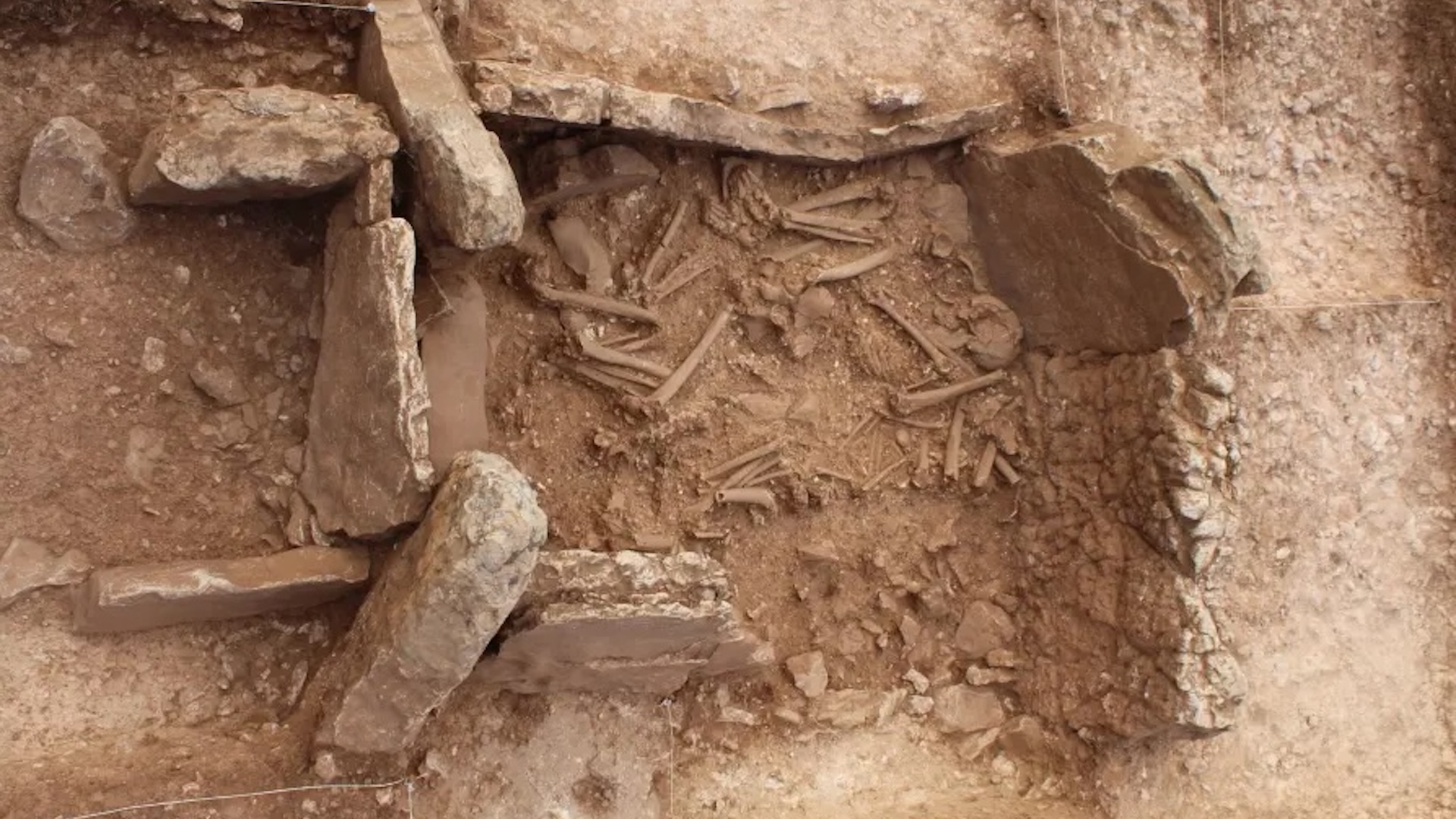5,000-year-old cemetery in Spain has twice as many females as males, and nobody knows why
There are more than twice as many females as males buried in an ancient cemetery in Spain, a new study finds — but no one knows why.

Archaeologists in southern Spain have discovered a cemetery dating to 5,000 years ago that has about twice as many females as males, a new study finds.
The burial ground, known as Panoría cemetery, has a series of rock chamber tombs, including the remains of at least 19 dolmens, which are stone pillar "roofs" on upright megaliths that function as "walls." The site was excavated between 2015 and 2019 and contains collective burials that in total have about 55,000 human skeletal remains, according to a statement from the University of Granada, whose researchers did the research jointly with scientists from the University of Tübingenin in Germany.
The team found that the remains belong to at least 91 individuals. Scientists were able to determine the sex of 44 of them, finding that 27 were females and 17 were males, the scientists wrote in a paper published Sept. 23 in the journal Scientific Reports.
The sex difference was more pronounced among non-adults, with the team finding one male and 6 females. Among the adults, there were 16 males to 21 females, or a ratio of less than four males per 5 females. If you add non adults and adults together, the overall ratio is less than 2 males per 3 females.
"The Panoría population shows an extremely unbalanced demographic pattern favouring females that cannot be explained by natural dynamics or extraordinary and unpredictable events," the researchers wrote in the study.
To identify the sex of the deceased, the scientists used three different methods. With one method, they analyzed the skeletons, particularly the pelvis and head. In some cases, the ancient DNA of the deceased was preserved, enabling the team to look for XX or XY chromosomes. And the third method looked at amelogenin peptides in the skeleton's dental enamel. These peptides are encoded by a gene that's found only on the X chromosome.
Related: 5,000-year-old mass grave of fallen warriors in Spain shows evidence of 'sophisticated' warfare
Get the world’s most fascinating discoveries delivered straight to your inbox.
The scientists noted in their paper that the analysis of ancient DNA and dental enamel are game changers in determining the sex of children and teenagers, as it can be very difficult, if not impossible, to determine the sex of younger individuals through a skeletal examination.
However, once the team learned of the skewed sex ratio, they couldn't solve the mystery of why there were so few boys and men buried there. It's possible that the matrilineal line was important in this society and resulted in more females than males being buried at the site, the scientists speculated.
In matrilineal cultures, females are prioritized. "It is possible that lineage daughters stayed with the kin group while sons left to join other kin groups (male exogamy)," the researchers wrote in the study. However, they added that more research is needed to support this idea.
When the cemetery was in use, people in the area were living as "farmers and agriculturalists exploiting their nearby landscape," study first author Marta Díaz-Zorita Bonilla, a bioarchaeologist at the Institute of Prehistory, Early History and Medieval Archaeology at the University of Tübingen, told Live Science in an email. There is little to no evidence of warfare in the region at this time, she said.
While more research needs to be done to determine why substantially more females than males are buried in Panoría cemetery, the study was well executed, said Katina Lillios, an anthropology professor at the University of Iowa who was not involved in the study.
"This is a carefully conducted study by a team of scholars who have devoted their careers to understanding the lifeways and deathways of prehistoric peoples in the Iberian Peninsula, and who have been particularly attuned to the ways that gender and sex shape the archaeological record," Lillios told Live Science in an email.
Ana Mercedes Herrero Corral, a postdoctoral fellow at the Austrian Academy of Sciences, also praised the paper, particularly the techniques the team used. Speaking as "a specialist in child osteoarchaeology," Corral said: "I must highlight the sampling of non-adult individuals in this work. The biological sex of these individuals cannot be identified osteologically and can only be determined through certain analytical methods," citing techniques such as ancient DNA analysis and dental peptides.
That "is why, until very recently, they [non-adults] could not be included in studies on sex ratios or even gender differences," Corral said. She added that she looks forward to seeing any future research the team carries out.

Owen Jarus is a regular contributor to Live Science who writes about archaeology and humans' past. He has also written for The Independent (UK), The Canadian Press (CP) and The Associated Press (AP), among others. Owen has a bachelor of arts degree from the University of Toronto and a journalism degree from Ryerson University.


